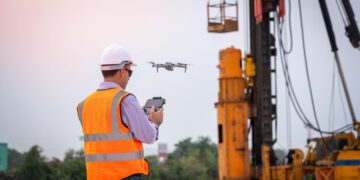The commercial aviation sector is witnessing an era of unparalleled innovation. From structural designs to propulsion technologies, the next generation of aircraft is setting the stage for a revolution. In India, with its rapidly growing aviation market, the arrival of these aircraft technologies is especially significant. “Tomorrow’s flights will be defined not just by destinations but by the journey of innovation itself.”
1. Ultra-Efficient Aerodynamics
Rethinking Aircraft Shape: Advancements in fluid dynamics are giving rise to unique aircraft shapes that reduce drag and enhance fuel efficiency.
Active Flow Control: New technologies, like embedded sensors, actively monitor and adjust airflow across wings and fuselage, optimizing performance.
2. Groundbreaking Propulsion Systems
Hybrid-Electric Engines: As the push for greener aviation grows stronger, hybrid systems that combine traditional fuel with electric power are emerging.
Open Rotor Engines: Offering significant fuel savings, these engines, without the conventional ducted casing, are making a comeback with modern noise reduction techniques.
3. Sustainable Materials and Weight Reduction
Bio-Based Composites: The use of sustainable, bio-derived materials for aircraft components offers both environmental benefits and weight savings.
3D Printed Parts: Advanced manufacturing techniques, like 3D printing, produce lighter and more durable components with reduced waste.
4. Cabin Innovations for Enhanced Passenger Experience
Flexible Cabin Layouts: Modular designs allow for customizable cabin spaces, catering to different passenger needs, from workspace pods to relaxation zones.
Smart Windows: Windows with adjustable opacity levels or embedded display technology can provide passengers with information or entertainment without onboard screens.
5. Advanced Avionics and Automation
Intelligent Flight Systems: With AI integration, flight systems can make real-time decisions, adjusting routes based on weather or optimizing fuel consumption.
Enhanced Pilot Assistance: Advanced cockpit displays, coupled with augmented reality, provide pilots with comprehensive information for safer and more efficient flights.
6. Noise Reduction and Community Well-being
Quieter Engine Designs: Innovations are leading to engines that produce significantly less noise, ensuring community well-being around airports.
Landing Approach Optimizations: Advanced systems allow aircraft to adopt steeper and quicker landing approaches, minimizing noise footprint.
7. Revolution in Aircraft Size and Capacity
Urban Air Mobility: Smaller, agile aircraft designed for short urban routes are emerging, potentially revolutionizing city commutes.
Superjumbo Reimagined: While large capacity aircraft remain relevant for busy routes, next-gen designs focus on efficiency, luxury, and advanced amenities.
Conclusion
The future of commercial aviation is not just about transporting passengers from point A to B; it’s about doing so with heightened efficiency, sustainability, and experience. As India continues to embrace these soaring innovations, the sky is not merely a limit but a canvas for limitless possibilities.




















